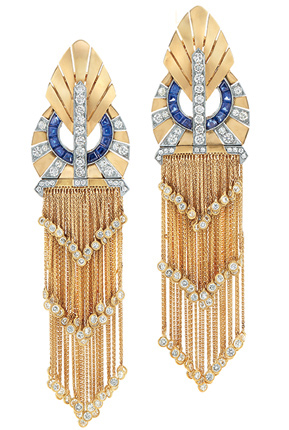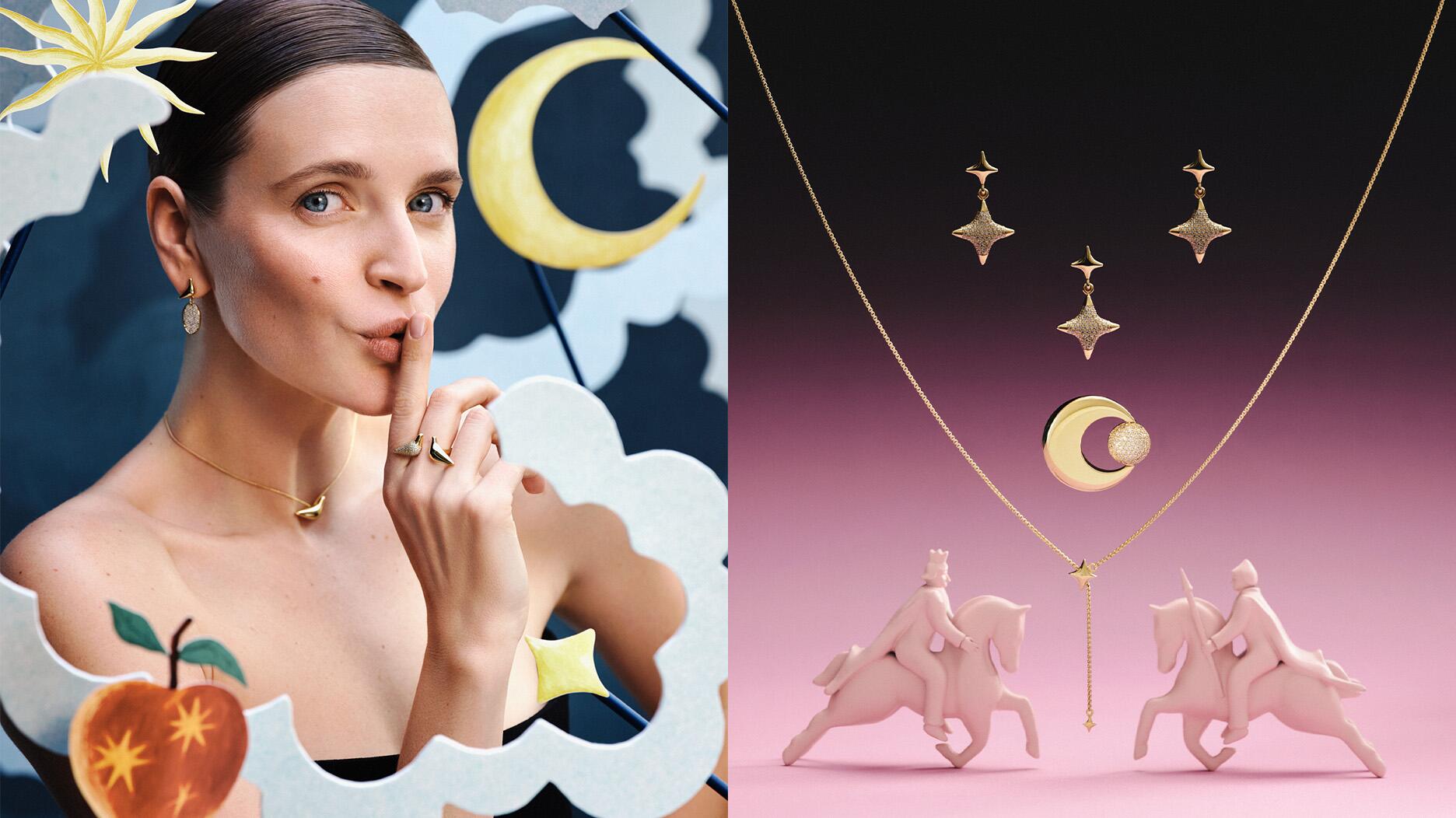Carlos Jose Hernandez and Joshua Zuazo were sentenced to life without the possibility of parole in the 2024 murder of Hussein “Sam” Murray.
The History Behind … Dress Clips
What inspired these popular Art Deco-era pins, and what forced them out of fashion? A look at the story behind a style that’s similar to the brooch.

New York--Dress clips are a type of pin that first gained prominence in the 1920s and were worn in pairs, often opposite one another on the neckline or straps of a dress.
The style, however, fell out of favor in the 1950s when classic brooches regained popularity, and it never really recovered.
So, what forced dress clips out of fashion, and will they ever come back in style again?
Greg Kwiat, CEO of Fred Leighton, and Rebecca Selva, chief creative officer and public relations director for the jeweler, recently took the time to chat with National Jeweler about this Art Deco-era trend, and some of the ways in which Fred Leighton is finding new life for these classic clips.
When did women first start wearing dress clips? Dress clips, Kwiat said, first began to appear post-World War I. Fashion in both clothing and jewelry changed as the world worked to recover from the “Great War” and time marched on into the 1920s, a famous decade for style.
During this time, “fashion began to dictate some of the jewelry trends” in many respects, Kwiat said. “The tight, corseted dresses of the Edwardian period came into a much more free-form flowing, adventurous, romantic style,” including the famous flapper dresses of the era.
This new style of dress called for more ornamentation, and Kwiat said dress clips evolved as a reaction to that and were worn not only on dresses but also on furs and accessories, like handbags.
“I think it’s a real phenomenon in a way because dress clips become the piece of jewelry you have to have, and becomes integral to a dress and a look,” Selva said. “Designers are putting them on these dresses that they are making. Some of the big thrust was the movies, people going to the movies in the 1920s, and they’re seeing these beautiful women with these dress clips and they want that.”
And so companies started making them in great number, and not just the great houses such as Cartier, Van Cleef & Arpels and Raymond Yard, but famous costume jewelers of the era too, like Trifari and Coro. This, in turn, feeds back to the fine houses and the dress clip quickly establishes itself as a “must-have item in fashion,” Kwiat said.
“The costume jewelry industry,” Selva said, “gave such a boost to that concept.”
Did dress clips serve any purpose?
What separates the dress clip from the classic brooch? Kwiat said in the beginning, dress clips were always in pairs, worn separated from each other on the strap or neckline of a dress, and almost always symmetrical.
However, they also could be worn together. He said pairs of dress clips often had a back that secured the two halves together so it became one piece, like a more classic-style brooch.
“That’s really the difference,” he said. “The dress clips are two pieces that can be worn together or separate whereas a brooch is typically a single element.”
Kwiat added that the Art Deco period is also the first time dress clips appeared, whereas one could go as far back as the Ancient Egyptians and find brooches.
When do we see dress clips begin to decline in popularity? In the 1930s and ‘40s, the style of dress clips evolved alongside other jewelry.
The bright-white platinum and diamond aesthetic of the early Art Deco era expanded to incorporate yellow gold and more colored gemstones and asymmetry became more of an acceptable idea.
As World War II ended, though, styles began to change.
Kwiat noted that during the Great Depression and the World War II, people went to the movies to escape and were inspired by the styles of actresses like Jean Harlow, Greta Garbo and Marlene Dietrich, who were featured on screen and in images wearing dress clips.
“(Dress clips are) never going to be what (they were) before but I always want to think that there’s people out there who love it and will wear them and enjoy them.” --Rebecca Selva, Fred LeightonBut then, “World War II ends, times change, fashions change,” he said. “And in the 1950s, the brooch really resurges in popularity and dress clips become less popular. You see dress clips fade a little bit in the minds of consumers.”
And they really never made a comeback.
“Dress clips really occupy a very distinct moment in time and they kind of bring you back to the ‘20s, ‘30s and ‘40s,” Kwiat said.

Do you think the dress clip will ever regain the same type of popularity they enjoyed in the 1920s? “I pray every day for that,” Selva laughed. “You know what, it’s never going to be what it was before, but I always want to think that there’s people out there who love it and will wear them and enjoy them.”
Kwiat agreed, “It will never be as popular as it was in the 1920s.”
While today’s more casual dress doesn’t lend itself to the traditional manner of wearing dress clips, Selva noted that there are different ways of donning them today. Some women wear a single clip to dress up a pair of black pants while others tuck them into updos to add some glamour to the hair.
Fred Leighton, too, has found ways of incorporating beautiful Art Deco-era dress clips into modern-looking pieces of jewelry. “When we see beautiful dress clips, sometimes we feel they can make the basis of a beautiful design of some other kind,” Kwiat said.
The jeweler crafted a black enamel bangle with a pair of platinum diamond, ruby and onyx dress clips in mind. They also have designed big, modern earrings incorporating dress clips with on-trend styles such as yellow gold and fringe.
This reflects another trend seen throughout the history of jewelry--versatility, the desire to craft pieces that can be worn in multiple ways.
“People were always thinking about how they could wear things differently and more often,” Kwiat said.
The Latest

Yood will serve alongside Eduard Stefanescu, the sustainability manager for C.Hafner, a precious metals refiner in Germany.

The New Orleans jeweler is also hosting pop-up jewelry boutiques in New York City and Dallas.

How Jewelers of America’s 20 Under 40 are leading to ensure a brighter future for the jewelry industry.

Set in a Tiffany & Co. necklace, it sold for $4.2 million, the highest price and price per carat paid for a Paraíba tourmaline at auction.


The jeweler’s “Deep Freeze” display showcases its iconic jewelry designs frozen in a vintage icebox.

Take luxury gifting to new heights this holiday season with the jeweler’s showstopping 12-carat sphene ring.

Roseco’s 704-page catalog showcases new lab-grown diamonds, findings, tools & more—available in print or interactive digital editions.

This year's theme is “Unveiling the Depths of the Ocean.”

Starting Jan. 1, customers can request the service for opal, peridot, and demantoid garnet.

The 111-year-old retailer celebrated the opening of its new location in Salem, New Hampshire, which is its third store in the state.

The new catalog features its most popular chains as well as new styles.

The filmmaker’s personal F.P. Journe “FFC” prototype was the star of Phillips’ recent record-setting watch auction in New York.

The new location in the Design District pays homage to Miami’s Art Deco heritage and its connection to the ocean.

Inflations, tariffs, and politics—including the government shutdown—were among consumers’ top concerns last month.

“Longtime favorite” presenters, as well as first-time speakers, will lead talks and workshops at the annual event in Tucson next year.

Silas Smith of Meridian Metalworks won the challenge with his pendant that blends Australian and American landscapes.

The sale of the 31.68-carat, sunset-hued stone was part of Sotheby’s first series of events and auctions in Abu Dhabi.

Most customers who walk into your store this month have made up their minds. Your job is to validate their choice, Emmanuel Raheb writes.

MatrixGold 3.11, the newest version of the jewelry design program, offers more flexibility, precision, and creative control.

The pavilion will be part of the 2026 JA New York Spring show, scheduled for March 15 to 17.

Kadet, a 1994 National Jeweler Retailer Hall of Fame inductee, helped grow the family-owned retailer in the Chicago area and beyond.

Billed as the world’s smallest wearable, Lumia Health’s new smart earrings have a health tracker subtly embedded in the back.

Don’t let those with December birthdays feel blue. Help them celebrate their month with blue zircon, turquoise, and tanzanite.

The new pink sapphire version of the piece dances with its wearer in the brand’s “Icons After Dark” holiday campaign.

A choice that’s generated a lot of commentary, Pantone says “Cloud Dancer” marks a fresh start and encourages relaxation and creativity.

The manufacturer’s holiday campaign features a gift guide filled with trending designs and jewelry that can be personalized.



























